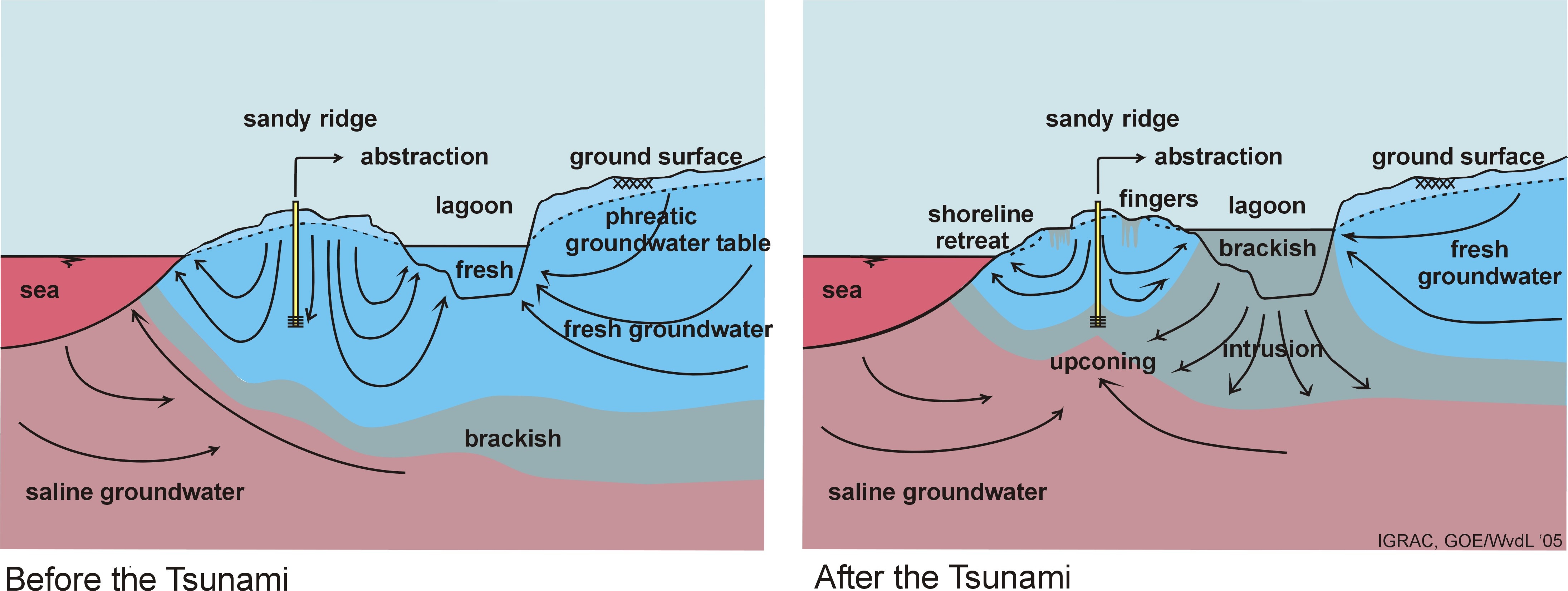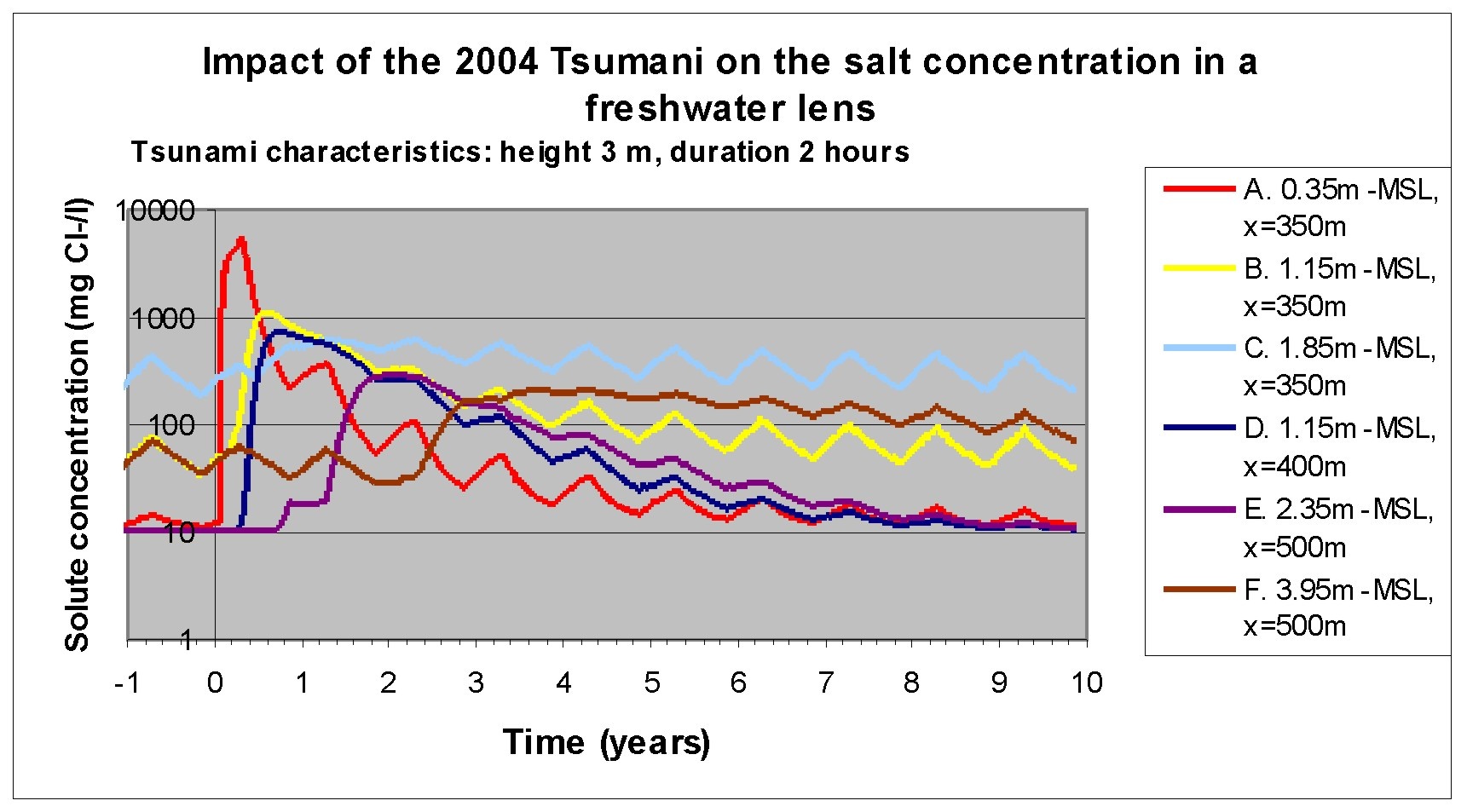Impact of the 26-12-2004 Sumatra Tsunami on freshwater resources on islands.
The Sumatra Tsunami has affected many fresh groundwater resources in the low-lying coastal zones in the north-eastern part of the Indian Ocean (Gulf of Bengal). Figure 1 gives a sketch of possible impacts on freshwater resources in coastal aquifers. Questions can be asked about how serious the impacts of the floods on fresh groundwater resources are; about how harmful they are from a drinking water point of view; and about how long it takes before the contaminated freshwater resources are clean again for consumption.
By analyzing several possible situations in the subsoil that may have occurred, we have tried to describe the relevant processes of salt water intrusion in the coastal aquifers by means of conceptual models. The main hypothesis is that sea water that flooded the land may have intruded into the subsoil, causing density driven flow through salt water fingers (figures 2 and 3).
Factors of importance are:
• Disturbance and reduction of the freshwater lens by the subsurface pressure wave.
• Local geometry of the inundated areas.
• Duration of sea water standing on the land.
• Leaching of salts from the soil.
• Local weather conditions during the coming months.
Figure 1: Schematic representation of the possible effects of the Sumatra Tsunami on coastal groundwater systems: upconing of brackish groundwater under abstraction wells, intrusion of brackish or saline water from ponds, fingering of brackish water from pools, reduction in freshwater volume due to shoreline retreat, etc.
Figure 2: Conceptual models are used to analyse the impact of the Tsunami on groundwater resources: e.g. Concept freshwater lens in a coastal aquifer with a brackish lagoon.
Figure 3: Chloride concentration as a function of time at various depths and at various positions in the freshwater lens. Flooding with seawater occurs at year 0. Seasonal variation in concentration is mainly caused by seasonal variation in recharge.


